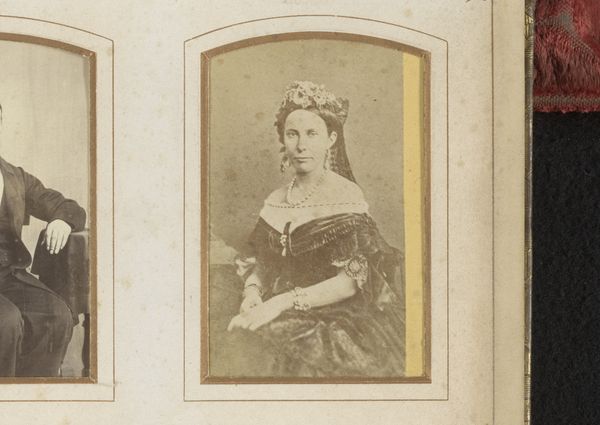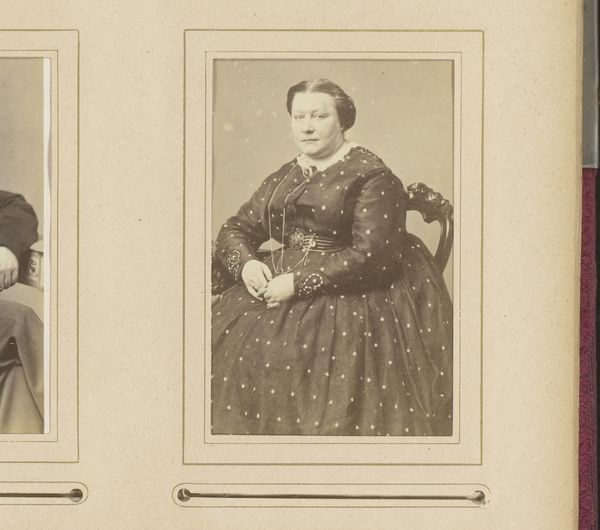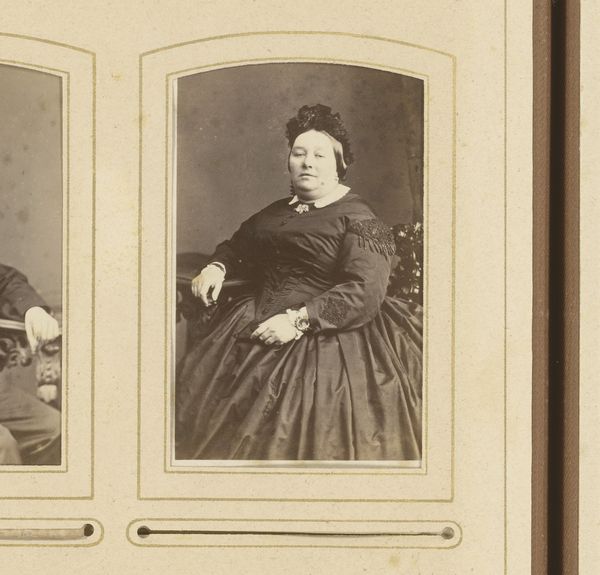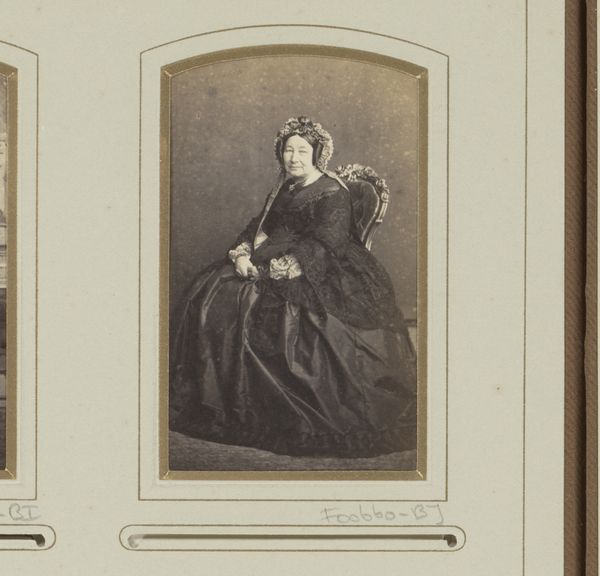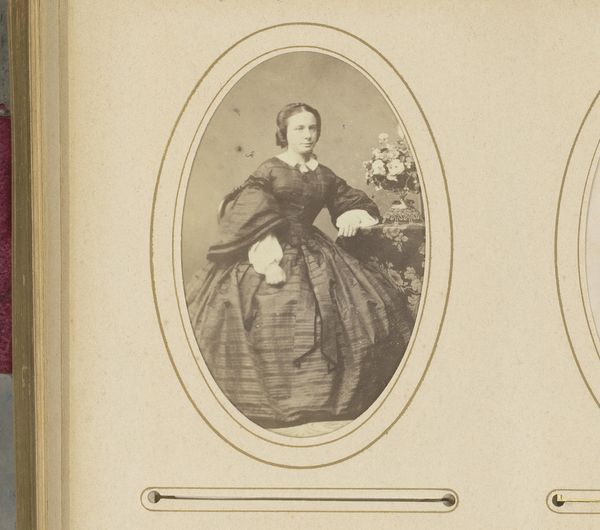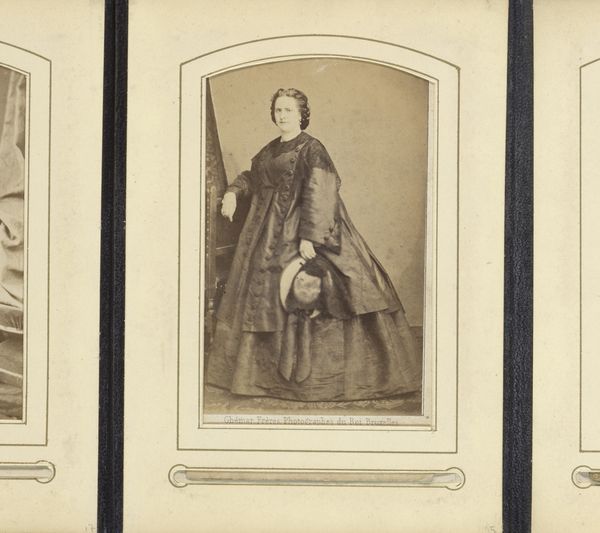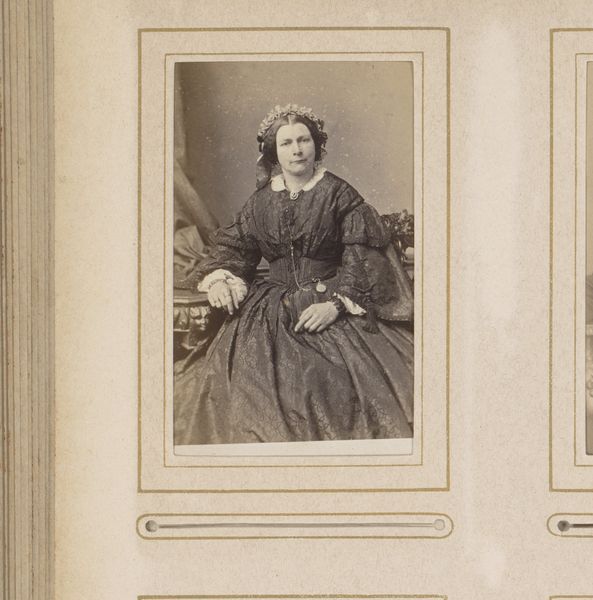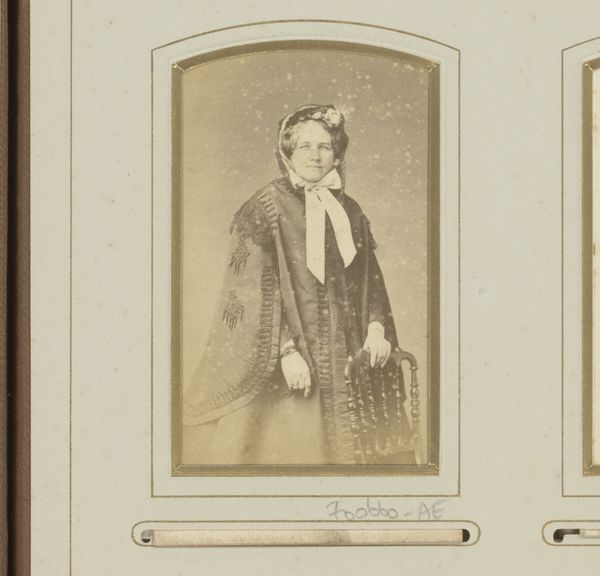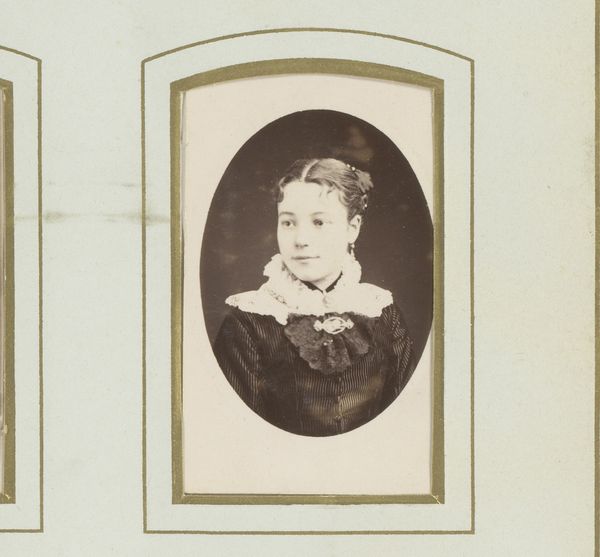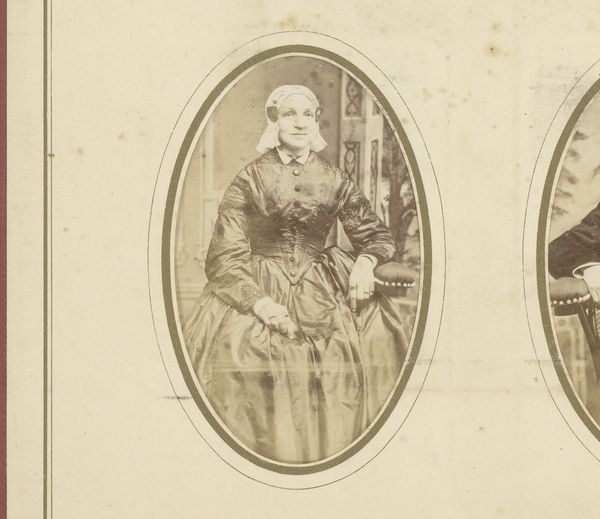
photography, albumen-print
#
portrait
#
photography
#
historical photography
#
19th century
#
albumen-print
Dimensions: height 85 mm, width 50 mm
Copyright: Rijks Museum: Open Domain
Curator: This portrait, entitled "Portret van een zittende vrouw met muts," meaning "Portrait of a seated woman with a bonnet", is attributed to Leonard Stollenwerk and likely dates between 1864 and 1884. It is a photographic albumen print, quite typical for its time. What's your initial impression? Editor: Austere, wouldn't you say? The oval composition frames the woman in such a way that all lines, colors and textures lead to her face; yet she looks tired. Her costume seems intentionally simple, or just dated. There is a lot of hidden detail within these neutral shades. Curator: Absolutely. The simplicity is telling, isn't it? The albumen process itself was relatively accessible, leading to a surge in portrait photography amongst the middle classes. While we don't know this woman's profession, her clothes could imply a certain socio-economic status, as photographic portraits moved from an aristocratic exclusivity to wider societal consumption. Editor: Indeed. And look at how she is placed: seated, but not relaxed. She's leaning on a table. Consider the use of light: highlights subtly define the shapes, the roundness of her cheeks, but everything else remains somewhat obscured in shadow. Her garments are functional, but do feature lace at the cuffs and collar. The visual economy serves a purpose. Curator: Right. The labor involved, the creation of the photograph itself. Think about the staging involved. This wasn't a snapshot; it was a constructed image, meant to convey something about the sitter and the emerging industry of photographic portraits. And that bonnet, with all its ruffles, looks anything *but* functional, doesn’t it? Editor: Yes, those intricate details do signal some level of prosperity. The overall subdued tonality, however, almost seems to prefigure the grayscale aesthetic of the modern era. Its simplicity of forms and its very 'honesty' create the charm of this work. Curator: I agree. Seeing it in the context of photographic history and portraiture production really lets us reconsider how we value portraiture today, and question the traditional ideas around art production, craft and access. Editor: The piece's intrinsic details invite questions of aesthetics. That visual clarity invites viewers to really spend some time thinking about this portrait.
Comments
No comments
Be the first to comment and join the conversation on the ultimate creative platform.
